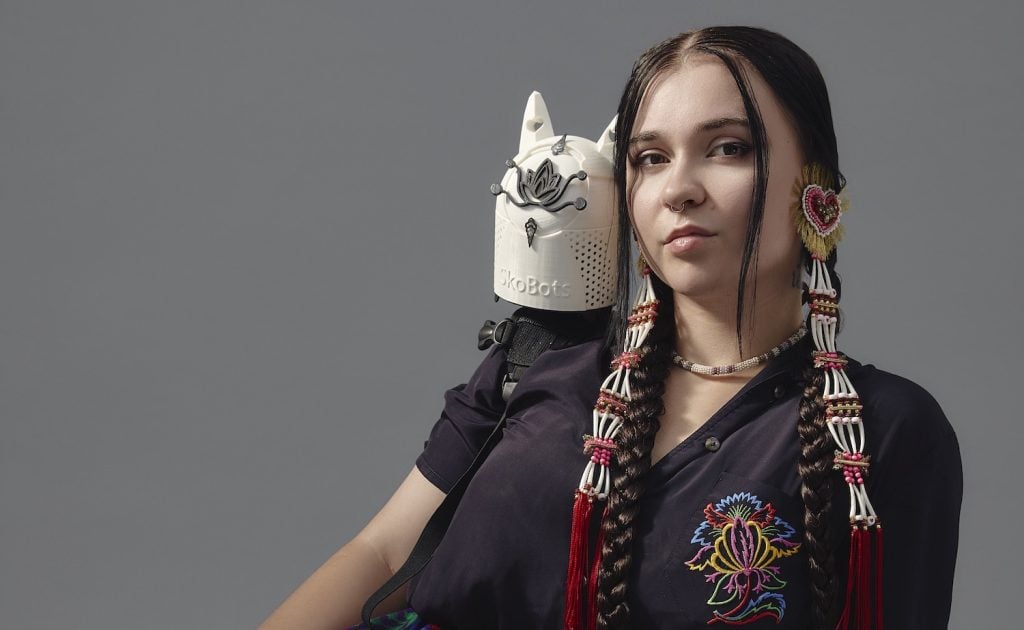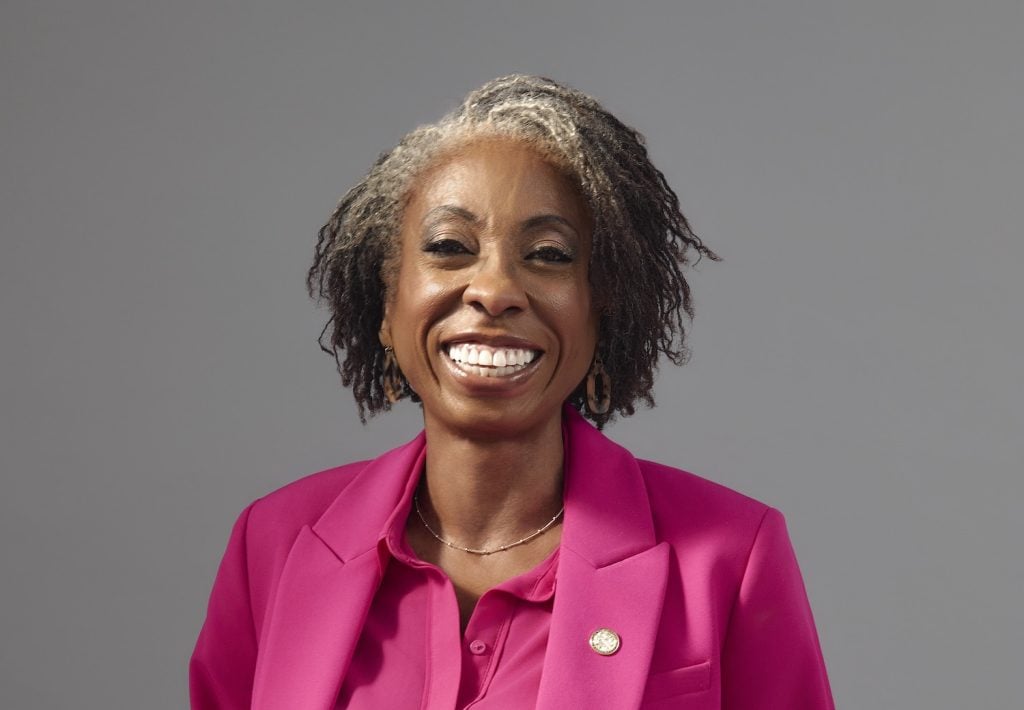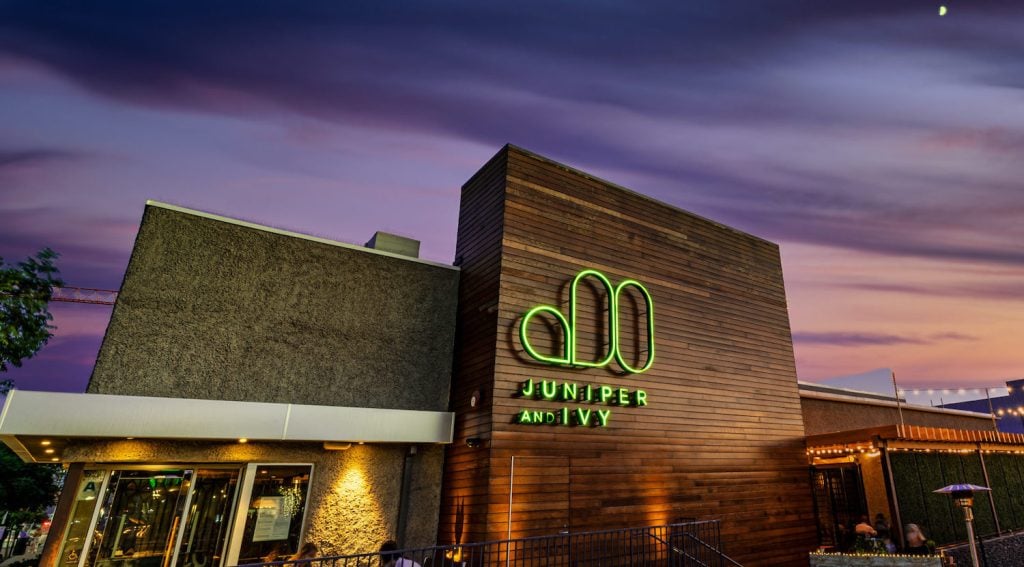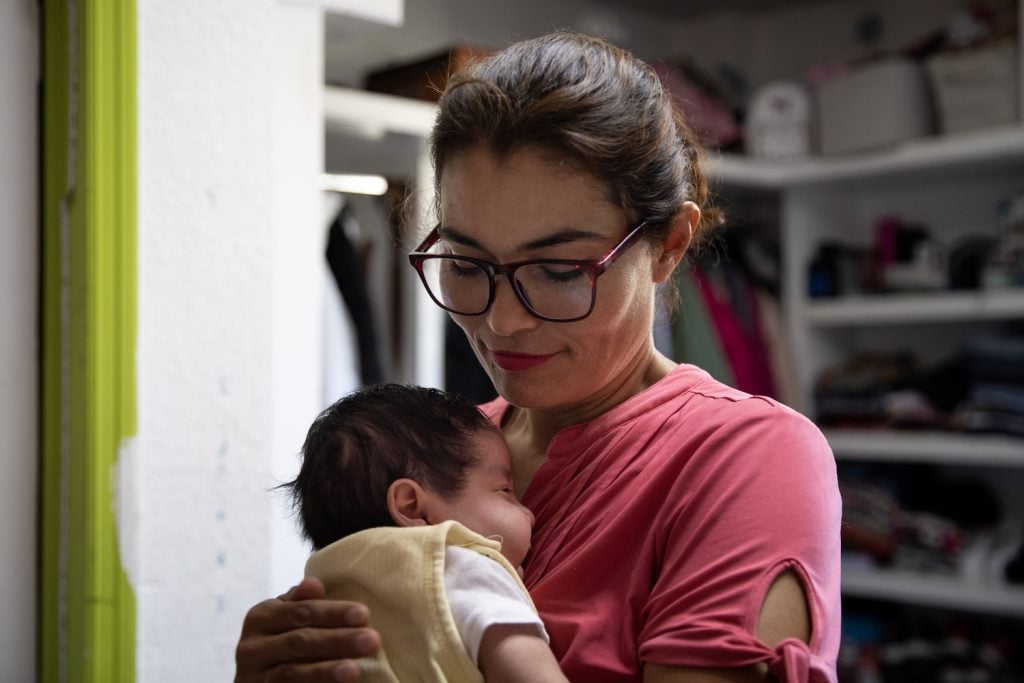Top reasons to attend a private school
- Limited enrollment and small classroom size
- Innovative curriculum
- Access to the arts
- Emphasis on character development and moral values
- Individual attention
- Highly qualified teachers
- Single-sex education
- Religious teaching
- Intensive college prep and higher scores on standardized testing
One of the greatest gifts a parent can bestow upon a child is the gift of education. Considering a private versus a public education is an important decision for many families. At school, young minds are nurtured and stretched as a path to higher knowledge is presented. According to the National Center for Education Statistics, 5 million (or approximately 10 percent of) students in the U.S. attend private schools. San Diego is home to more than 300 private schools, so there are a wealth of excellent options when it comes to finding the right educational experience.
For those considering private school education, here’s a road map to San Diego’s private schools.
Finding the right school
When it comes to deciding which private school is best for your child, it’s important for both parents and students to dig deep and truly research the potential academic institutions. Don’t be shy when it comes to asking questions to determine whether a specific school shares goals and ethics similar to your own. Potential applicants should also take the time to prepare for their interviews to increase their chance of acceptance. Here are a few tips on how to navigate the process.
- Take a list of questions. Ask about class size, art programs, languages taught, parent involvement, extracurricular programs, academic support programs, what technology tools are used in the classroom, and more.
- Audit a class. Most schools will allow you to sit in on a class so you can experience the teaching styles and classroom ambience firsthand.
- Connect with families of current students. This is a good way to get an insider’s perspective on both the academics and ethics of the community within the school.
- Listen to your child’s concerns, responses, and reactions. Sometimes what appears to be the perfect school is actually better for the parent than the child.
- Hire an educational consultant. These experts can help determine the right fit for your child.
- Coach your child. Admission committees are looking for curious minds and students who are truly interested in learning. Your child should express enthusiasm for and knowledge of the school they are applying to, so be sure to give them the appropriate tools and information to shine in the interview.
Cyberbullying
Today’s students are faced with myriad stressors—everything from academic challenges and competition among peers to social pressures and hormonal swings. On top of all of that, cyberbullying—defined as harassing, embarrassing, or threatening any person through use of the internet or technology—is also taking its toll on young academics. About 58 percent of kids admit that someone has said mean or hurtful things to them online. More than 4 out of 10 students say it has happened more than once.
With 80 percent of teens owning smartphones, it’s no surprise that the devices have become the most common medium used to send embarrassing photographs and unkind texts. Hiding behind technology allows students to avoid face-to-face confrontation and to secretively bully one another. Sadly, most children do not tell their teachers or parents about such incidents: Studies show that only 1 in 10 victims will ever inform an adult.
And while no school is immune to bullying, studies by the National Center for Education Statistics reflect that it’s less prevalent in private schools than public schools. Smaller classrooms and student-to-teacher ratios allow for greater awareness and detection of bullying problems.
A recent five-year study with approximately 185,000 students from both public and private schools showed that the latter enforced anti-bullying policy more often. Because cyberbullying can have pronounced effects on its victims, potentially leading to depression, low self-esteem, and even suicide, parents should talk to their children about it, and encourage them to reach out to adults when experiencing this widespread issue.
*Sources: Megan Meier Foundation, DoSomething.org
Facts to know!
82%
average acceptance rate
$14,500
average private high school tuition
14:1
average student-teacher ratio
52%
are religiously affiliated
$8,532
average private elementary school tuition
319
private schools in San Diego
*Source: Private School Review
What’s Trending in Private Education
Classrooms without walls. Teacher Twitter accounts. Service learning experiences. Yes, the times are a-changin’, and so is the educational experience. Here’s what’s trending.
The Arts
While the push for students to pursue STEM classes has dominated the recent school scene, the arts are being recognized as a crucial component for 21st-century smarts. The World Economic Forum’s The Future of Jobs report declared complex problem solving, critical thinking, and creativity as the top three key traits for the human workforce in 2020. Look for more music, fine arts, dance, digital arts, and theater in the curriculum, as research shows that studying the arts enhances social and emotional development along with improving problem solving skills, cognitive ability, critical thinking, creativity, innovation, collaboration, and leadership abilities.
Technology Integration
As quickly as technology evolves, so does its role in the private school classroom. Kindergarteners have iPads, lessons are enhanced by whiteboards, and teachers blog, make videos, and have wikis. Technology is spurring a move toward more personalized education, and it’s changing every year. Rapidly.
Digital Detox and Sustainability Initiatives
Schools are also embracing the importance of non-screen time and getting students back to nature. Look for more outdoor field trips, school garden time, and classes on environmental stewardship and green learning.
Global Citizenry
Educators are encouraging greater multicultural awareness and connectivity with other countries and people. Many independent schools are incorporating more exchange programs, volunteer experiences abroad, Skype communication with students abroad, and academic expeditions, all as a way to open the minds of their students on an international level.
San Diego Private Schools Guide
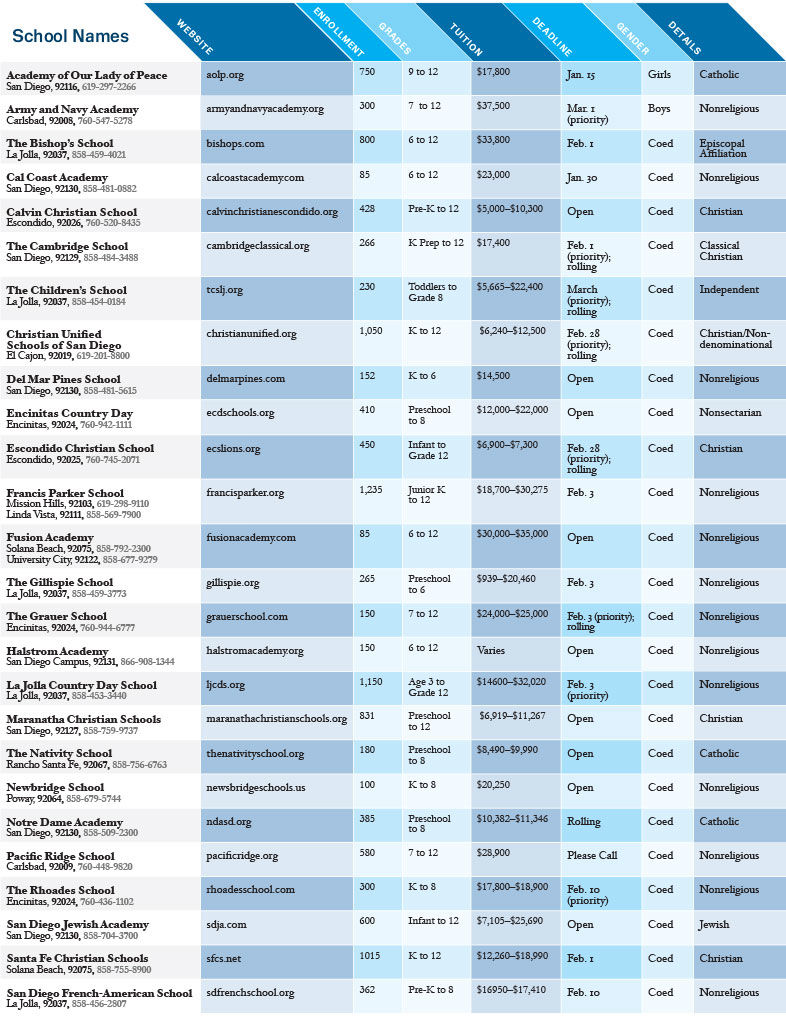
A Guide to San Diego’s Private Schools 2017

A Guide to San Diego’s Private Schools 2017



